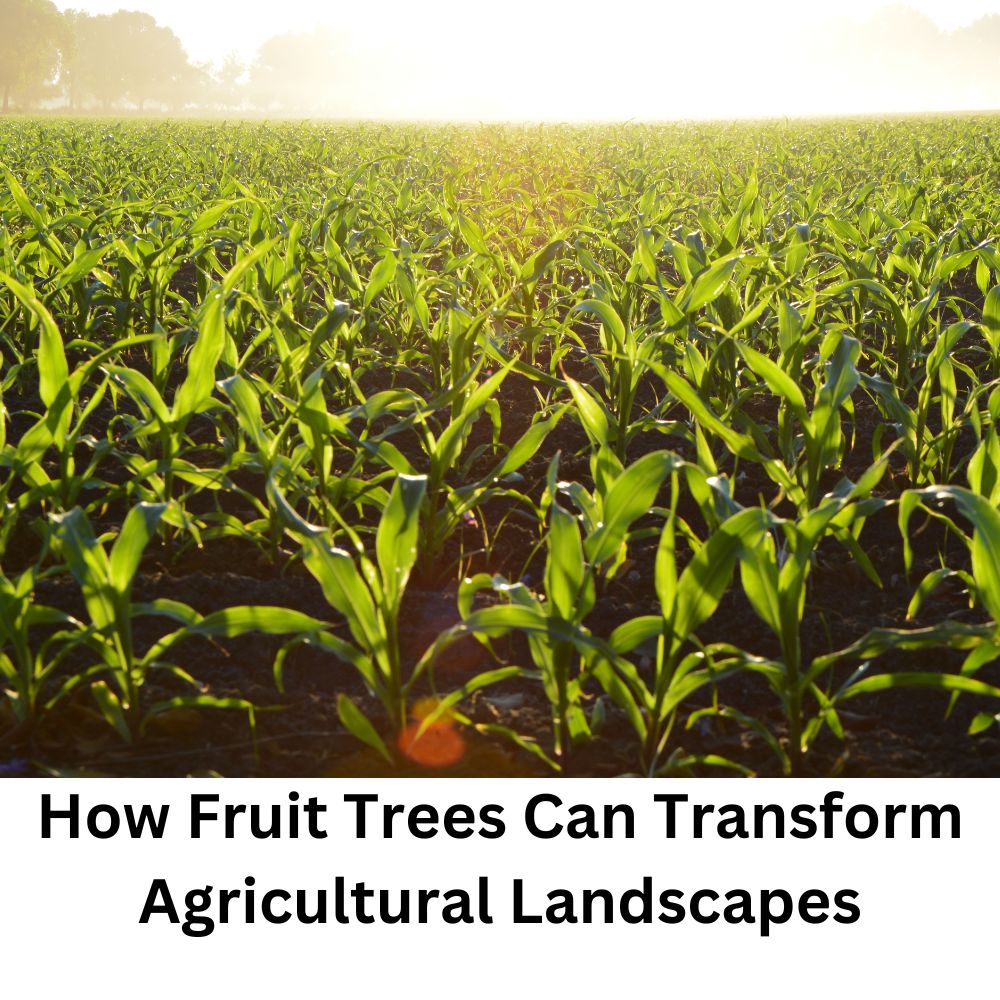Branching Out to Sustainable Farming
Fruit trees, often relegated to the confines of orchards, hold untapped potential to revolutionize agricultural landscapes. They are not merely sources of delectable fruits but key players in sustainable agriculture, capable of transforming both the land and the lives of those who cultivate it.
The Multifaceted Benefits of Fruit Trees
Integrating fruit trees into agricultural systems isn’t just about diversifying crops; it’s a holistic approach to sustainable farming:
Enhanced Biodiversity: Fruit trees attract and support a wide range of pollinators and beneficial insects, contributing to a more balanced and resilient ecosystem.
Soil Health: The deep root systems of fruit trees improve soil structure and fertility. They help in preventing erosion and retaining moisture, crucial in arid and semi-arid regions.
Carbon Sequestration: Like all trees, fruit-bearing varieties are effective at capturing atmospheric carbon dioxide, helping mitigate climate change impacts.
Economic Stability: Diversification through fruit trees can provide farmers with additional income sources. This is especially valuable in times of market or environmental uncertainties.
Innovative Farming Practices
Incorporating fruit trees into traditional farming involves innovative practices:
Agroforestry Systems: Combining fruit trees with crops or livestock creates synergies that benefit the entire farming system. Practices like alley cropping or silvopasture are examples.
Permaculture Designs: Permaculture principles emphasize the use of perennial plants like fruit trees for sustainable and self-sufficient agricultural systems.
Overcoming Challenges
While the benefits are compelling, challenges such as lack of knowledge, initial investment costs, and market access can hinder the widespread adoption of fruit trees in agriculture. Solutions lie in education, community-based initiatives, and supportive agricultural policies.
Case Studies of Success
Across the globe, there are inspiring examples of how fruit trees have transformed agricultural landscapes:
In the highlands of Kenya, farmers have integrated avocado and macadamia trees into their farms, seeing improvements in soil health and a rise in income.
In the United States, apple and cherry trees are being used in agroforestry systems to provide both food and timber, demonstrating the economic and ecological viability of such practices.
The Road Ahead
The journey of integrating fruit trees into agricultural landscapes is filled with potential. It’s a path towards a more sustainable, resilient, and profitable form of agriculture. By embracing these practices, farmers and communities worldwide can step beyond the traditional orchard, towards a future where agriculture and nature exist in harmony.
Agroforestry Innovations: Cutting-Edge Technologies for Modern Farmers
Blending Tradition with Technology
In the dynamic world of agriculture, agroforestry is a testament to the harmonious blend of traditional practices and modern technology. This sustainable farming approach is revolutionized by cutting-edge technologies, offering new opportunities for modern farmers
.
The Digital Transformation of Agroforestry
Precision Farming Tools: Advanced GPS and GIS technologies enable farmers to map and manage their agroforestry systems with unprecedented precision. This helps in efficient resource allocation and better crop-tree-livestock integration.
Drone Technology: Drones are revolutionizing agroforestry by providing aerial views for monitoring tree health, crop status, and land use patterns. They also assist in precision planting and spraying, minimizing labour and maximizing efficiency.
Remote Sensing and Satellite Imagery: These technologies offer insights into soil health, moisture levels, and land topography. Farmers can use this data to decide tree planting, irrigation, and crop rotation.
Smart Irrigation Systems: Automated irrigation systems, controlled via smartphones, use weather forecasts and soil moisture sensors to optimize water usage. This not only conserves water but also ensures the right amount of irrigation for both crops and trees.
AI and Machine Learning: Artificial intelligence is harnessed to predict pest outbreaks, disease spread, and crop yields. This predictive analysis can significantly improve agroforestry management practices.
The Benefits of Tech-Driven Agroforestry
Increased Productivity: Technology enables the efficient use of resources, leading to higher yields and better-quality produce.
Sustainability: Smart technologies reduce the ecological footprint of farming, helping in soil conservation, water management, and carbon sequestration.
Economic Viability: Farmers can achieve better profitability and resilience against market fluctuations with improved efficiency and yields.
Overcoming Barriers
Despite the potential, adopting these technologies faces challenges like high initial costs, the need for technical expertise, and accessibility issues in remote areas. Addressing these barriers through education, government support, and public-private partnerships is crucial.
Success Stories
Globally, there are numerous success stories of technology-enhanced agroforestry:
In Brazil, satellite imagery and AI monitor and optimize coffee and cocoa agroforestry systems.
In Africa, mobile apps help farmers access weather information, market prices, and expert advice for their agroforestry practices.
The Future is Now
As we stand at the crossroads of a technological revolution in agriculture, embracing these innovations in agroforestry is not just an option but a necessity for the modern farmer. By integrating these technologies, we can ensure a sustainable, profitable, and environmentally friendly future for agriculture.
